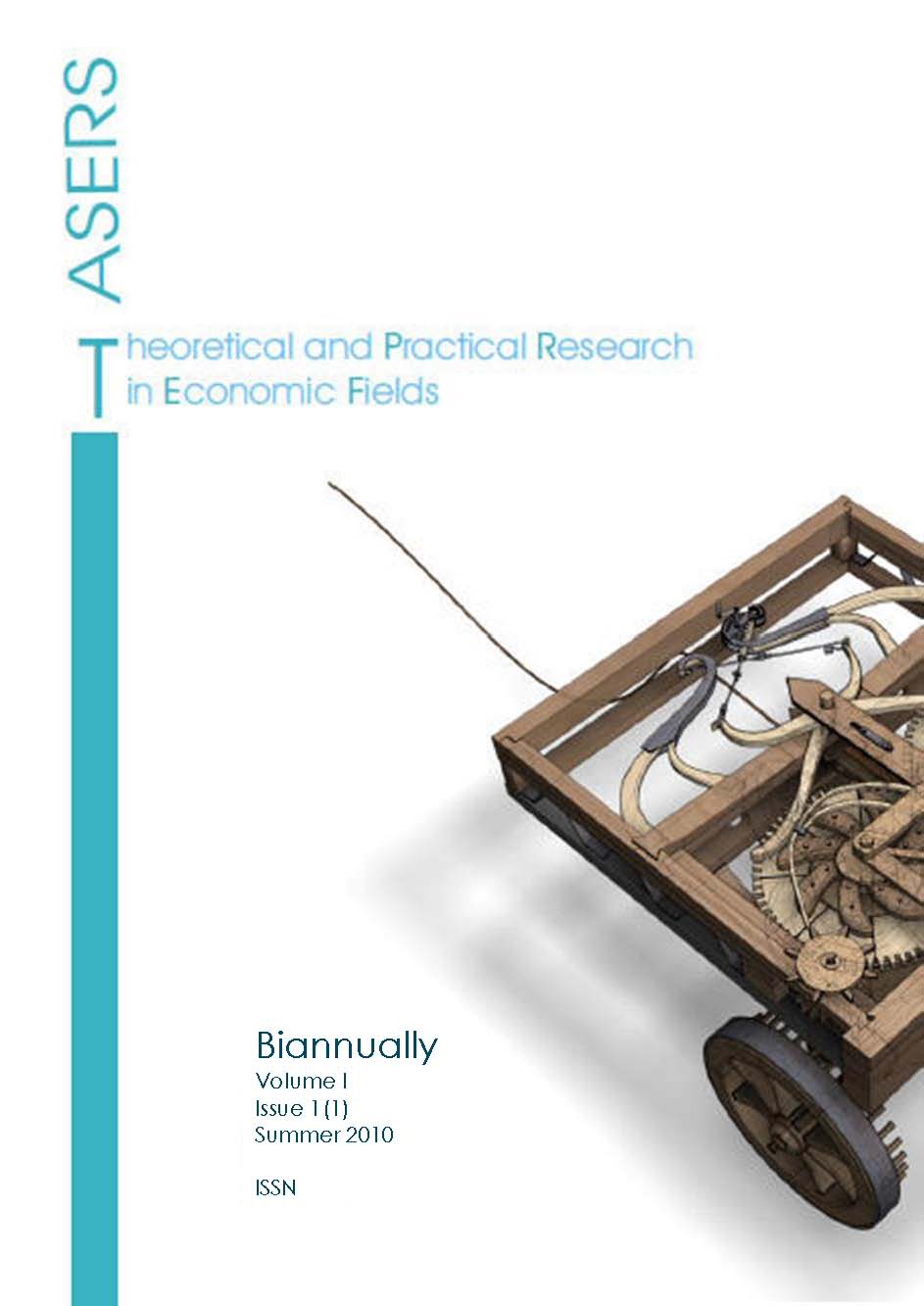GLOBAL SUPPLY CHAINS AND THE GREAT TRADE COLLAPSE: GUILTY OR CASUALTY?
Abstract
With globalization, trade and production have been increasingly interlinked, thanks to the vertical integration of industrial production processes through outsourcing and off-shoring. The expansion of international supply chains determined the apparent increase in trade elasticity observed since the late 1980s, and may explain also the overshooting of trade elasticity during the 2008-2009 trade collapse. After reviewing the available evidences, the article analyses the future of globalized production networks in a post-crisis scenario. In the short term, global rebalancing might prove easier than expected, because trade in intermediate goods inflated artificially some bilateral trade deficits, albeit bilateral exchange rate adjustments have reduced impacts. But supply chains may become smaller and more regional as a result of this rebalancing. This scenario creates a challenge for labour abundant less advanced developing countries in the periphery of the large regional networks, which will find more difficult to attract productive investments. Yet deglobalization remains a distant threat as long as the technical and institutional factors that made possible the internationalization of production are preserved.
References
[2] Bénassy-Quéré, A., Decreux, Y., Fontagné, L., and Khoudour-Castéras, D. 2009. Economic Crisis and Global Supply Chains. CEPII No 2009-15, July 2009.
[3] Carrère, C., de Melo, J., and Wilson J. 2010. Distance and Regionalization Of Trade For Low-Income Countries. World Bank WPS5214, February 2010.
[4] Daudin, G., Monperrus-Veroni, P., Rifflart C., and Schweisguth, D. 2006. Le commerce extérieur en valeur ajoutée. Revue de l’OFCE 98: 129-165.
[5] Djankov, S., Freund, C., and Pham C.S. 2006. Trading on Time. World Bank Policy Research Working Paper No. 3909.
[6] Dvorak, P. 2009. Clarity is missing in Supply Chain. The Wall Street Journal, 18 May 2009.
[7] Escaith, H. 2007. Old and New Dualisms in Latin America and Asia: Labour Productivity, International Competitiveness and Income Distribution. Revista Trabajo No.5, ILO-UAM.
[8] Escaith, H. 2008. Measuring trade in value added in the new industrial economy: statistical implications. 12th Meeting of the Association française de Comptabilité nationale and MPRA Paper 14454, Munich.
[9] Escaith, H., and Gonguet, F. 2009. International Trade and Real Transmission Channels of Financial Shocks in Globalized Production Networks. WTO Working Paper ERSD-2009-06, May 2009.
[10] Escaith, H., Lindenberg, N., and Miroudot, S. 2010. International Supply Chains and Trade Elasticity in Times of Global Crisis. WTO Working Paper ERSD-2010-08, February 2010.
[11] Feenstra, R., and Hamilton, G. 2006. Emergent Economies, Divergent Paths: Economic Organization and International Trade in South Korea and Taiwan. Cambridge University Press.
[12] Grossman, G., and Rossi-Hansberg, E. 2006. The rise of offshoring: it’s not wine for cloth anymore, Proceedings, Federal Reserve Bank of Kansas City.
[13] Hertwich, E., and Peters, G. 2009. Carbon Footprint of Nations: A Global, Trade-Linked Analysis. Environmental Sciences and Technology Vol. 43 No 16: 6414–6420.
[14] Hurst, R., Buttle, M., and Sandars, J. 2009. The Impact of the Global Economic Slowdown on Value Chain Labour Markets in Asia. (September 2009).
[15] IDE-JETRO. 2006. How to make Asian Input-Output Tables. March 2006.
[16] Johnson, R.C., and Noguera, G. 2009. Accounting for Intermediates: Production Sharing and Trade in Value Added. Dartmouth College and University of California, Berkeley.
[17] Krugman, P. 1995. Growing World Trade: Causes and Consequences. Brookings Paper on Economic Activity 1:327-377 – 1995.
[18] Lynn, B. 2009. How Detroit Went Bottom-Up. The American Prospect, October 2009.
[19] Milberg, W. 2007. Export Processing Zones, Industrial Upgrading and Economic Development: A Survey. New School for Social Research.
[20] Miroudot, S., and Ragoussis, A. 2009. Vertical Trade, Trade Costs And FDI. OECD Trade Policy Working Paper No. 89.
[21] Oosterhaven, J. 1996. Leontief versus Ghoshian Price and Quantity Models. Southern Economic Journal Vol. 62, No. 3: 750-759.
[22] Stadtler, H. 2008. Supply Chain Management – An overview, In Hartmut, S., and Kigler, C. Supply Chain Management and Advanced Planning. Springler-Verlag, 4th Edition.
[23] Sturgeon, T., and Van Biesebroeck, J. 2009. Crisis and Protection in the Automotive Industry: A Global Value Chain Perspective. World Bank Policy Research Working Paper 5060.
[24] Tanaka, K. 2009. Trade collapse and international supply chains: Evidence from Japan. VoxEU.org, 7 May 2009.
[25] Uchida, Y., and Inomata, S. 2010. Vertical Specialization in the Time of the Economic Crisis. IDE-Jetro 2010.
[26] Yi, Kei-Mu. 2009. The collapse of global trade: The role of vertical specialisation, In R. Baldwin, and S. Evenett (eds), The collapse of global trade, murky protectionism, and the crisis: Recommendations for the G20, VoxEU publication 2009.
[27] WTO. 2010. Market Access for Products and Services of Export Interest to Least-Developed Countries. WT/COMTD/LDC/W/46 Revue.1 , February 2010.
Non-Exclusive License under Attribution 4.0 International Public License (CC BY 4.0):
This ‘Article’ is distributed under the terms of the license CC-BY 4.0., which lets others distribute, remix, adapt, and build upon this article, even commercially, as long as they credit this article for the original creation. ASERS Publishing will be acknowledged as the first publisher of the Article and a link to the appropriate bibliographic citation (authors, article title, volume issue, page numbers, DOI, and the link to the Published Article on ASERS Publishing’ Platform) must be maintained.
